Elizabeth Harrin's Blog, page 29
January 28, 2023
What we want from project management tools in 2023
I don’t often wear a watch, but when I do it’s a very unassuming watch with real hands. Not a smart watch. I’ve been a little bit in awe at colleagues who get WhatsApp messages on the wrists. I’m not sure if I would want that, but I do love the simplicity of it.
And then I log into my PM software and suddenly that simplicity that exists elsewhere disappears…
Here are my wishes for the PM software industry for 2023.
1. Give us more dataProjects generate huge amounts of data. We have forecast and actual dates, timesheets, budgets, databases of lessons learned, risks, issues and changes.
And yet, mostly, what we know is what we’ve learned from experience. Searching historical project data and surfacing relevant information is tough. Big data and artificial intelligence features should be making it easier.
For example, imagine reviewing estimates from the project team. As you enter their estimated effort for tasks, the software prompts you: Claire’s estimates were 20% under on her last five projects. Would you like to add 20% to this estimate? Well, yes. Yes, I would.
I’d like project management software that makes it easy to make data-driven decisions based on relevant corporate knowledge – the kind of knowledge that leaves when an experienced project manager takes a job somewhere else.
We should be capturing it and presenting it to new project managers so the organization learns and adapts for more successful project delivery.
2. Make it useableMy five-year old can give Alexa instructions and get the song or joke he wants. I want project management tools with the same level of usability. Tools that work without a huge learning curve.
I know what we do is complicated.
The amount of icons and menu options on an enterprise tool shows me that. I want all the features, but I also want usability, mobile apps, integrations with other tools, voice commands and contextual help for when I don’t understand what to do next.
I want the detail for my own use so I can do my job effectively, and a simple interface for stakeholders who just need to see overall status.
3. Give ustimeUltimately, project managers want to win back time from being in front of computers, so they can spend that time with the people who matter for the project.
Culture and leadership are what makes businesses successful. You can’t automate stakeholder engagement or motivating a team. Project managers need to spend time on the things that really drive successful delivery, and that isn’t entering data into software.
We couldsave hours of project time with software that supports project teams byautomating what can be automated, making it easy to make the right decision andsurfacing information when we need it.
The tech exists out there to move project management tools on leaps and bounds. Typically, we see improvements in consumer products (like Alexa) before those improvements make it into the average workplace.
I hope it won’t be long before we start to see some of the fantastic AI initiatives making their way into the tools we use to deliver projects – because as our project environments get more complicated and complex, I for one could do with all the time-saving, intelligent help I can get.
A version of this article first appeared in Business & Industry in 2019.
This article first appeared at Rebel's Guide to Project Management
January 27, 2023
Best CAPM Exam Prep Tools for 2023
You’re here because you’re looking for the best way to get CAPM certification (Certified Associate in Project Management – CAPM®) without having to invest in a load of study guides.
Well, you’re in the right place. We’ve reviewed a range of the best CAPM exam prep materials on the market and you can read our assessments below. If you’re short on time, here are our recommendations:
Best CAPM prep course: The PM PrepCast for CAPM
Best CAPM exam simulator: The PrepCast CAPM Exam Simulator
Best CAPM exam prep book: CAPM Exam Prep by Rita Mulcahy
Read on if you’d like to learn why those recommendations top our list and to see the other study materials that will help you gain your CAPM credential.
CAPM Study MaterialsThe CAPM certificate from PMI is an entry-level qualification for people who want to evidence they have the knowledge to work in a project environment. Recognized by organizations around the world, it involves a relatively lengthy application process and a 3-hour exam. You also have to show that you have completed 23 hours of project management education – and that’s where the study materials come in.
While you can claim any relevant training you’ve had in the past, for example, modules of your project management degree, in-house courses laid on by your employer, most people seem to opt for a CAPM prep course.
In this article, we’ll look at the best exam prep courses for CAPM, plus exam simulators to help you prepare for the test and study books.
CAPM Exam SimulatorsThe PM PrepCast for CAPMThe reason why the CAPM Exam Simulator tops the list is that I think it hands-down offers the best CAPM practice exams. It’s easy to use but mimics the real environment and the statistics impressed me. You can see your results in a great deal of detail which is a huge time-saver. Focus on the areas where you didn’t do so well on the test questions, and review the recommended resources to recap those topics. The analysis lets you track your progress so you can see how you are improving as you study.
If you only buy one CAPM study tool – make it this one. Use it in conjunction with A Guide to the Project Management Body of Knowledge (PMBOK® Guide) and you might not need anything else at all.
The PM Exam Simulator came top in my reviews for Project Management Professional (PMP)® test questions too. Read why.
CAPM Practice ExamsBy James L. Haner and Cate McCoy
A book in the simulator section? Yes. This book contains over 1,000 exam questions and you get access to an online test tool as well. I think it’s worth having a full digital simulator to help you get used to having to sit for 3 hours doing a test (I never sit that long for any stretch normally, being constantly interrupted or having meetings), which is why this isn’t my top pick.
However, there is definitely value in having a book you can carry around, flip through, make notes in the margins off, and then follow up with online learning too. It’s a hybrid kind of product – and reviews from past students show it has helped them pass the test, so it definitely works!
CAPM Prep CoursesWhile test questions are a must-have to feel prepared and confident on exam day, many students opt for a training course too.
The PM PrepCast for CAPMThis is definitely my choice for the best CAPM online training. The PM PrepCast for CAPM is an online 23-hour training course from Cornelius Fichtner, PMP, CSM. His company is a trusted training provider with great reviews from their happy (and certified! students), so you know the course has been vetted and is top quality.
The course meets the PMI requirements for formal project management education and provides you with a certificate for evidence in case your PMP application is audited.
The online course is delivered via video and audio, through an online course platform. You login, and everything is there for you inside one website.
Looking for PMP Exam Prep or want to read my review of the PM PrepCast for the PMP Exam? Check it out here.
CAPM Exam Prep 2023If the PrepCast isn’t right for you, try this CAPM Exam training course by BrainBOK contains everything you need to pass the CAPM Exam. It includes their CAPM Study Guide created to complement the PMBOK Guide and the rest of their training materials so that you can achieve your certification in a short time frame.
Just be aware that the materials are not reflective of PMBOK® Guide – 7th Edition as it doesn’t look like the product has been updated yet.
The study bundle includes over 1,000 exam practice questions, 2100 flashcards, an ITTO guide, as well as access to their study forums. It also includes the 23 contact hours that PMI requires for the exam.
Read my more extensive BrainBOK review to learn more about this training.
I only reviewed online courses for CAPM because with people coming to this blog from all over the world, that’s going to be most relevant to most people. However, if you know you would do better in a CAPM bootcamp surrounded by ‘live’ students and a trainer, then check out reviews of courses that run close to you. Your local PMI Chapter may have a list of recommended in-person prep courses that you could investigate.
CAPM Prep BooksThere are loads of CAPM study guides available via Amazon or your local bookshop, but the ones that come out top time and time again in student reviews are these.
Rita Mulcahy’s CAPM Exam Prep Book (4th Edition)By Rita Mulchay
Rita has passed away now but her legacy lives on in the book series managed by her company. Her impact on project management studies cannot be underestimated: she wrote a best-selling prep book for the PMP exam too and her books get great reviews from students.
I love the writing style and it’s an accessible, comprehensive book. Make this your go-to guide.
CAPM/PMP Project Management Certification All-in-One Exam Guide (4th Edition)By Joseph Phillips
Joseph Phillips is a trainer whose name comes up time and time again. He runs a popular student Facebook group and has helped lots of people pass the tests.
This book is unique in our list in that it also covers the Project Management Professional (PMP)® exam too. If you think you might go on to take that, then this book will sit happily on your shelf until you are ready to go through the application process for that certification.
It includes over 1,000 practice exam questions as well.
Remember, you’ll also need a copy of A Guide to the Project Management Body of Knowledge (PMBOK® Guide) – Sixth Edition (for the moment – the CAPM exam is being updated in 2022 and that update will no doubt reflect content from the Seventh Edition). PMI members can download one free from the PMI website – make sure you are logged in first.
Choose your study materialsUltimately, the best study materials are going to be the ones you love using and are confident in. My top picks are all revision guides that I feel confident turning to and using as reference materials. I trust them and I understand where they’ve come from – the providers have credibility and pedigree, as well as thousands of successful students, which always helps!
While no study guide is a guarantee that you’ll pass, the best ones will prepare you for the test. The rest is down to you. Good luck!
Pin for later reading
This article first appeared at Rebel's Guide to Project Management
How to Earn Power Skills PDUs for PMP Renewal in 2023
If you are like many Project Management Professional (PMP)® certification holders, you might be finding it hard to source enough quality learning materials for your Power Skills PDUs. Panic no more, I have all the details you need below.
Table of ContentsWhat are Power Skills PDUs?What does 'Power Skills' mean?What project management tasks count as power skillsExamples of qualifying activities for Power Skills PDUsThe easiest way to earn Power Skills PDUsNext stepsPin for later reading:In this article we’ll look at what Power Skills PDUs are and how many you need, and what activities count towards your PDU total in the Power Skills category.
What are Power Skills PDUs?Power Skills is one side of the PMI Talent Triangle, along with Ways of Working and Business Acumen. Power Skills used to be known as Leadership Skills in the Talent Triangle but it was re-badged in 2022 to make it more relevant to the profession.
Power Skills is also broader and in many ways more vague than ‘leadership’ but I would argue that’s a good thing for professional development and also for PDUs!
Power Skills PDUs form part of the Education requirement for recertification.
The table below shows how many Power Skills PDUs are required for each PMI certification.
CertificationPower Skills PDUs RequiredPMP8PgMP8PfMP8PMI-PBA8PMI-ACP4PMI-RMP4PMI-SP4CAPM2What does ‘Power Skills’ mean?The PMI website defines Power Skills like this:
These interpersonal skills include collaborative leadership, communication, an innovative mindset, for-purpose orientation, and empathy. Ensuring teams have these skills allows them to maintain influence with a variety of stakeholders – a critical component for making change.But what does that actually translate to, as tasks we can do for PDUs?
The PMP® exam content outline has some more information on what leadership looks like. In fact, I’d say that the PMP exam has been aligned to structure perfectly to the Talent Triangle, with everything in the People section being fair game for collecting Power Skills PDUs.
What project management tasks count as power skillsLet’s take the exam content outline for the PMP as that’s a good guide to what PMI thinks power skills means.
Here’s the list of activities in the People domain.
Manage conflictLead a teamSupport team performance (this is about appraisals, team development, giving feedback and identifying areas for individual improvement)Empower team members and stakeholdersEnsure team members and stakeholders are adequately trainedBuild a teamAddress blockers for the teamNegotiate project agreementsCollaborate with stakeholdersBuild a shared understanding (this is about facilitating conversations to reach consensus)Engage and support virtual teamsDefine team ground rulesMentor relevant stakeholdersPromote team performance using emotional intelligence.That’s quite wide-ranging, and there’s a lot in there you can turn into PDU opportunities.
Get a head start with my guide to 15 easy ways to earn PDUs this year.
How to Earn Leadership PDU and Strategic and Business PDU from OSP International LLC Examples of qualifying activities for Power Skills PDUsWe all use leadership skills, and many other ‘soft’ skills in project management which means there are plenty of opportunities to claim PDUs in this area as long as you are learning about related topics.
Even if you feel like you’re not in a ‘leadership’ type job, for example, you’re after PDUs for CAPM because of the role you do, you can still find ways to evidence your learning.
To be honest, I enjoy developing my leadership and interpersonal skills more than I do learning technical techniques. However, much of project management education is based on technical skills, so you do have to keep an eye out for qualifying activities that count towards your Power Skills PDU total.
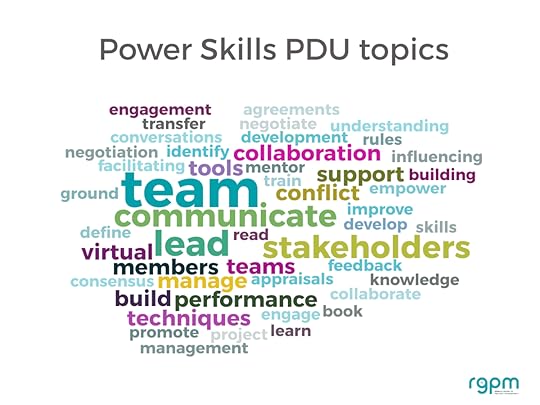
For example:
Any kind of formal or informal training, webinar or podcast on the topics of:
Conflict managementNegotiation skillsInfluencingEmpathyEngagementCollaboration techniques (reading my book on collaboration tools would also count)Knowledge transfer tools and techniques.Any reading, research time or learning about:
Managing virtual teamsEmotional intelligence (start with this book)Team engagement and team building activities like a scavenger hunt.I have a resource to get you started with building team engagement across virtual teams, that you could also adapt for teams working in the same location.
More ideas! Team Engagement Tactics $7.00Step-by-step instruction guide and training videos on two different ways to engage and have fun with your team! Learn how to create an interactive team map AND how to set up an online countdown calendar.
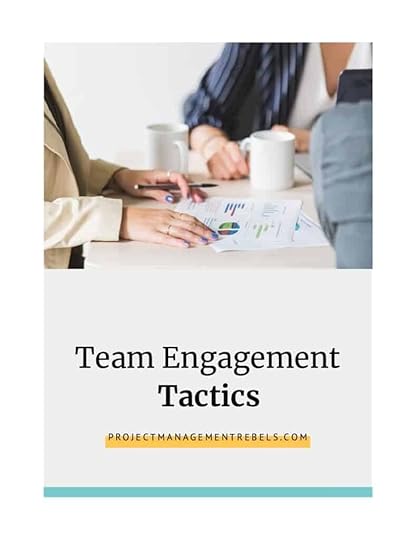 Buy now The easiest way to earn Power Skills PDUs
Buy now The easiest way to earn Power Skills PDUsIf all that seems too difficult, then the easiest way to earn your Power Skills PDUs is simply to buy a bundle of curated training materials specifically designed to meet the PMP certificate’s requirement for 8 hours of professional development in that field.
There aren’t many resources specifically designed purely for this segment of the Talent Triangle, so the one I recommend is The PDU Podcast Leadership Package.
I like it because:
It instantly means you earn 8 relevant PDUs (of course, you have to watch the webinars, but you can do that over a lunchbreak, on your commute or in the evenings)If you don’t need 8 PDUs in the Power Skills domain, you can carry them forward to the next recertification cycleThe PDUs come from OSP International LLC, a recognized PMI training provider with a long history of creating PMI-compliant training materialsThey come with a spreadsheet that shows you exactly how many PDUs you earn per webinar, so you save time entering your claim into the Continuing Certification Requirements (CCR) system.Do note that as at the time of writing (July 2022) the product has not yet been updated to be called something to do with Power Skills. However, the content is completely relevant and aligned to the Talent Triangle so despite the ‘old’ name, I would still recommend it.
Earn PDUs PDU Podcast $19.00Earn PDUs by listening to these podcasts on your phone, mobile device, or computer. Learn from 25 project management experts when it is convenient to you.
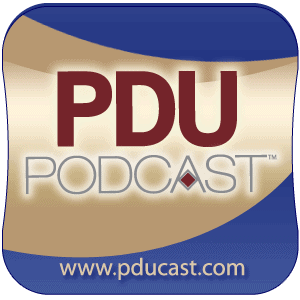 Learn more We earn a commission if you click this link and make a purchase, at no additional cost to you #ad
Learn more We earn a commission if you click this link and make a purchase, at no additional cost to you #ad I also have another article with tips on how to earn PDUs fast, so if you’re coming up on your time limit, you can quickly get what you need.
Next stepsReady to earn those elusive Power Skills PDUs?
Here are your next steps:
Make sure you have a copy of the CCR handbook so you can double-check exactly what you needLog into the CCRS and see what you’ve already logged against the Power Skills side of the Talent Triangle – it might be more than you think!Work out how many more PDUs you needLearn how to make time for professional development and then make a plan to earn the PDUs you need using the resources discussed above.See, simple! You can do it – as we’ve seen, as long as you identify the right learning opportunities, you’ll soon have a full quota of relevant claim codes to add into your record.
Want to learn more about leadership? Check out the Ultimate Guide to Leadership in Project Management.
Pin for later reading:
This article first appeared at Rebel's Guide to Project Management
Best PMI-ACP Exam Prep Courses for 2023
Short on time? In my opinion, the best PMI-ACP exam prep course is the Agile PrepCast. With that and PMI membership (to get a free PMBOK® Guide and Agile Practice Guide), you’ll be on your way to exam success.
Are you aiming to achieve your PMI Agile Certified Professional (PMI-ACP)®? Then you’ll be looking for a course that will give you exam confidence and fits the way you want to study.
I’ve rounded up the best PMI-ACP training courses below based on my knowledge of the industry and working with providers and students as a project manager and trainer. (Note: I’m not an agile trainer, but I am a Fellow of the Association for Project Management and I’ve got a lot of experience reviewing training courses – and I’ve taken plenty of them myself too!)
Keep reading for my analysis and reviews of the best PMI-ACP online training that will help you earn your agile certification and pass the test on your first attempt!
The coursesAgile PrepCastVelociteachJoseph PhillipsI’ve prepared a summary comparison table for the study materials below, with detailed product reviews afterwards, so read on for all the info!
Comparison tableCourseAgile PrepCastVelociteach Joseph Phillips Rating#1#2#3WebsiteAgile PrepCastVelociteachUdemyPrice$329 $388.80 $119.99Guarantee90-day exam pass 30-day Hours of instructionLive Feedback for questions with the exam simulator2 days live trainingnoneApproved contact hoursYesYesYesStudent supportEmail and forum 1:1 support until you pass the exam none stated Access duration 90-day6 months LifetimeSample exam questionsYes, if you buy the Elite or Elite PlusYesYesSuitable for PMI PDUsYesYesYesSuitable for study groups?YesYesYesWhat to look for in a course
for questions with the exam simulator2 days live trainingnoneApproved contact hoursYesYesYesStudent supportEmail and forum 1:1 support until you pass the exam none stated Access duration 90-day6 months LifetimeSample exam questionsYes, if you buy the Elite or Elite PlusYesYesSuitable for PMI PDUsYesYesYesSuitable for study groups?YesYesYesWhat to look for in a courseIf you are considering this training, you probably work on agile projects already (you’ll need to be able to evidence your agile experience when you apply to the Project Management Institute). That might mean some of the course topics sound quite basic as you’ve already got experience in them.
When you are looking for PMI Agile Certified Practitioner Exam course, you’ll want to make sure it covers:
Agile methodologiesAgile principlesAgile practicesAgile frameworksContinuous improvementAgile teams, team performance and stakeholder engagementAnd everything else mentioned in the Exam Content Outline which you can find on the PMI website.
In addition to covering the syllabus, look for courses that will also support you through the application process, beyond providing the contact hours certification as part of the eligibility requirements. For example, some providers include modules on how to apply and prep mentally for the test, as well as offering practice questions and case studies to help you get into the agile mindset required to do well on the exam.
Note that none of the courses below include your exam fee. You will still need to pay for and book your exam. I recommend that you become a PMI member to get a cheaper exam fee.
1. Agile PrepCastThe Agile PrepCast is a tried-and-tested online training course that I’ve used in the past and been impressed with. It’s a robust, engaging online course, although my personal opinion is that the slide formats and colours are dated.
I liked the real-world examples. Presented by Cornelius Fichtner, the course is straight to the point with no fluff.
This course takes the top spot for me because I can personally vouch for it. It’s a good price, it’s comprehensive and you really will leave it understanding the world of agile as well as how to pass the exam. You’ll feel like one of the pro agile practitioners after taking this course!
ProsIt’s really comprehensive with 16 modules. You don’t need an extra study guide (beyond the required reading of the PMBOK® Guide and the Agile Practice Guide) or to wade through all the recommended agile reference books that PMI suggests.
Other advantages include:
There are 21 hours of video instruction (at least) so you can easily feel confident you meet the requirements.You get a certificate for the 21 contact hours, so no worries if your application gets audited.There are 3 versions depending on what you need: Basic, Elite and Elite Plus. The Basic course includes the training materials. Elite comes with 6 practice exams via their test simulator and Elite Plus has some study guidebooks that literally form your study plan.There’s a really active student online forum where you can ask and answer questions as well as learn from other people’s experiences, as students regularly come back and share their exam prep journey.ConsIf you aren’t self-motivated, you won’t get through this training! You do have to make a study schedule and dedicate the time to getting through the content.
The other thing to note is that the training is longer than strictly necessary for the exam requirements. You’ll get a full understanding of the different agile approaches and how to apply them, but be aware other courses are shorter. You’ll have to decide if you want a comprehensive overview of the material to boost your confidence and give you real skills, or a course that might be ‘thinner’ but would still do the job.
Other disadvantages are:
There are no captions on the videos. This could be an issue if you routinely switch on subtitles, for example if you are studying in a noisy area without headphones.You can’t download the slides – I understand the intellectual property implications here and that the company are protecting their assets. Not being able to download the slides doesn’t matter to me. I take my own notes, which is a better learning approach for me anyway as it helps me remember.Best forProject managers who are motivated and can create their own study plan (or who are happy to use the StudyCoach guidebooks as their plan – but you have to be able to stick to the plan!). If you don’t think you have the commitment to self-study, then the next course is going to be a better fit for you.
Recommended The Agile PrepCast $229.00A full PMI-ACP exam prep course. Self-paced with video training modules, you'll quickly be on your way to your agile certification. We love this course from respected trainer Cornelius Fichtner and it's a cost-effective way to prepare for your exam. Upgrades available to add on the exam simulator and study guidebooks.
Receive 20% off the Agile PrepCast Basic with code jan23 during the month of January 2023!
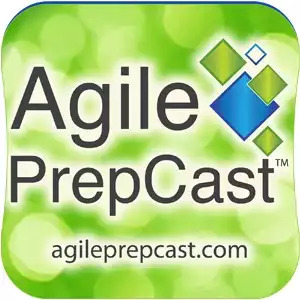 Learn more We earn a commission if you click this link and make a purchase, at no additional cost to you #ad 2. Velociteach
Learn more We earn a commission if you click this link and make a purchase, at no additional cost to you #ad 2. VelociteachI think Velociteach used to offer an online PMI-ACP exam prep course as I sometimes see that mentioned online in old articles. However, the last time I checked as I was putting this review article together, they don’t have a self-paced version of their training. They do, however, have an online, live-taught class.
The Velociteach PMI-ACP live class is comprised of 16 contact hours in class and additional homework assignments completed outside of class. You make up the other required contact hours with their practice test material, spending about half of the actual time in taking the mock exam and the rest in reviewing all of the explanations that accompany the practice test.
The Velociteach class and practice test hours have been accepted for many years by PMI for the PMI-ACP application, so you can be confident your pre-requisite hours will be OK.
ProsThis is a boot camp with additional materials, so it’s perfect if you want to blitz all your study requirements and get through the training in a short period of time.
Other advantages are:
The live instructor set up means you can ask questions and learn from your instructor as well as peers on the course.The whole package covers the 21 contact hours you need for the PMI-ACP.You get a copy of The PMI-ACP® Exam: How to Pass on Your First Try by Velociteach CEO Andy Crowe, which is one of the best books out there.It includes exam simulator-style test questions so you won’t have to buy any other resources (apart from the Agile Practice Guide/PMBOK® Guide if you are not a PMI member).They offer a full refund if you are unable to pass the exam (there are criteria to meet for this, including going through their study plan after you fail first time).ConsYou have to take time off work (if you are working) to do the classes. Plus they only run during US office hours. I think this could be an advantage if you live outside the US time zone and can do some work and then join the online lessons. You’d end up taking less time away from work and I do know people who preferred to do this to maximize their personal time.
However, it’s HARD. That’s a lot of learning and working to fit into 48 hours.
Other disadvantages include:
The online learning is only part of the package. You have to put in the rest of the training hours outside of the classroom element.As it’s a live course, it’s only available on certain days.It’s expensive. But you get what you pay for – this course includes live instruction.Best forIn my opinion, this course is a good choice for people who have some agile experience and want to quickly rack up their contact hours for their PMI-ACP application, and learn the theory and exam skills required to pass.
Online Courses by Insite - PMP Certification Exam Prep & Training - Velociteach
 Buy Now We earn a commission if you click this link and make a purchase, at no additional cost to you #ad 3. Joseph Phillips on Udemy
Buy Now We earn a commission if you click this link and make a purchase, at no additional cost to you #ad 3. Joseph Phillips on UdemyAll of Joseph Phillips’ courses on Udemy get good student reviews. I confess to not having taken any myself, but I think I’ve seen enough feedback from project managers I have spoken to and reviews to be able to comment, in comparison to the courses above. Nearly 36,000 students have taken the course at the time of writing!
ProsJoseph Phillip’s PMI-ACP Exam Prep Success course is an on-demand course with 39 hours of video instruction.
It’s cheap. Udemy nearly always has special offers so if you time it right, you can get this course at a low cost.It offers the 21 contact hours required to apply for the exam.It includes support on how to apply for the exam.The videos have captions in 5 languages! Great if English is not your first language or if you prefer to have subtitles on.It includes a practice test.You can gift the course to someone else – perfect if you already have an account on Udemy and are providing training resources for your team.ConsGiven that the course is advertised as having only 13 hours of video instruction, you’ll have to make up the rest of the 21 hours yourself using the practice test and other materials.
Another point to note is that this trainer is no longer a PMI approved education provider, despite the preview video saying that the company is part of the REP scheme. In fact, a lot of small training firms stopped being part of the approved provider scheme when PMI changed it.
However, there is no obligation on any student to take a course from an approved provider, or for your PDUs to come from approved providers. You’ll simply have to collate your evidence, submit your contact hours (or PDUs) ‘manually’ and log them that way.
Take notes of what you learn and be prepared to evidence your contact hours if necessary, for example, if your application is audited.
If you find the pace too slow, you’ll have to speed it up. I played the preview materials at 1.25x speed to get through the material at a fast pace.The slides don’t look hugely inspiring from the course preview materials I reviewed. They are text-heavy. However, Joseph Phillips is an engaging presenter. You could easily play the videos without watching them for the most part and use them more like an audio course, diving into the materials when there were concepts you wanted to review.Best forProject managers on a budget, who are prepared to self-study and put in the hours themselves. You may find that you need additional materials like an exam simulator in order to feel fully confident for the exam, although many students in the Udemy reviews say
Best price PMI-ACP Exam Prep SuccessThis comprehensive agile prep course is taught by Joseph Phillips, an experienced and well-respected trainer. It covers what you need to know for the PMI-ACP exam.
 Go to Udemy We earn a commission if you click this link and make a purchase, at no additional cost to you #ad Final thoughts
Go to Udemy We earn a commission if you click this link and make a purchase, at no additional cost to you #ad Final thoughtsIf you have already taken the Project Management Professional (PMP)® exam, then you might find the content of any of these courses a bit repetitive. Some of the basics overlap between the PMP and PMI-ACP content, as you would expect. That’s not really a big problem; simply use any parts that feel overly familiar to you as an experienced project manager as a refresher.
You can also count your PMI-ACP studies towards the PDU requirements for your PMP recertification – double win!
If you are a Scrum Master, then you’ll probably find these courses easy because you live and breathe agile project management every day. There might be some PMI-specific things to revise to help you get through the exam, but the agile methodology stuff and basic principles will not be new to you.
Other essential PMI-ACP exam prep materialsOnce you’ve chosen a course, you will also want to look at a few other resources to help you get exam confidence.
Successful students tend to use an exam simulator for test practice and study guides (books) to help reinforce what their course has covered.
Go here next:
Best PMI-ACP exam prep booksBest PMI-ACP study guidesBest PMI-ACP exam simulators (coming soon!)Whichever materials you choose, good luck with your studies!
This article first appeared at Rebel's Guide to Project Management
BrainBOK Review: PMP and CAPM Training [2023]
Category: Training for students preparing for Project Management Professional (PMP)® and Certified Associates in Project Management (CAPM)®: BrainBOK review.
BrainBOK is an online, reasonably-priced project management training program and toolkit for students preparing for PMP® and CAPM® exams.
I’ve reviewed the product in depth so I can confidently recommend it. In this review, I’ll share more about BrainBOK‘s features and the pros and cons of this project management training tool.
Table of ContentsWhat are Power Skills PDUs?What does 'Power Skills' mean?What project management tasks count as power skillsExamples of qualifying activities for Power Skills PDUsThe easiest way to earn Power Skills PDUsNext stepsPin for later reading:Cost and plansThere’s a free version to allow you to test out a limited number of features.
The PMP pack includes all the practice exams and the important proof of your 35 contact hours for your PMP® application is $139.99 for 60 days access.
CAPM® plans are slightly cheaper.
It’s also cheaper if you take the pack for a shorter period of time, but I wouldn’t recommend it: 90 days (3 months) is the commonly-recommended time to get ready for your exam.
If you don’t want all the training materials, you can buy the elements separately:
an exam pack to work through the exam simulator and test yourselfthe ITTO packthe flashcards pack.Oh, and there’s a money back guarantee!
Cost-effective training BrainBOK PMP Training $149.99
Get BrainBOK's comprehensive suite of PMP® exam prep tools, including a full training program, ITTO pack, flashcards, practice exams and a formula guide.
 Buy Now We are pleased to be an affiliate of BrainBOK #ad Product features
Buy Now We are pleased to be an affiliate of BrainBOK #ad Product featuresPMP and CAPM training has been online for a long time but right now it seems like there are more choices than ever before. One product I reviewed recently is BrainBOK, and as you can guess from the name it’s a PMP and CAPM self-study toolkit.
BrainBOK is an app from Harwinder Singh, the project management expert behind the PMP prep blog, Deep Fried Brain. He kindly gave me access to the product for a short while so that I could review it for you.
Inside the BrainBOK app you have:
ITTOsFlashcardsQuizzesExams.Understanding the ITTOs with BrainBOKHow many PMBOK® Guide processes have Enterprise Environmental Factors as an input?
Now the Seventh Edition of the PMBOK® Guide is available, ITTOs really don’t matter that much any longer. However, if you like the confidence of knowing you have reviewed all the materials and understand the processes, the ITTO Explorer that comes with BrainBOK makes all of that transparent. I’ve never seen anything like this before and it’s really good.
It shows you the complete set of processes and the ITTOs that go with them.
Click a process and you’ll get the description and details of that process. You’ll also see the inputs, outputs, tools and techniques, plus a list of where the data flows in from and goes out to. Drill down and see the page reference number from A Guide to the Project Management Body of Knowledge (PMBOK® Guide) too, but be warned these are Sixth Edition references, so not 100% relevant for your current set of study materials.
Within the Explorer, you can toggle between grouping them by Process Group or Knowledge Area so you can test yourself in different ways. However… again it’s worth repeating that process groups and knowledge areas do not exist in the 2021 PMBOK® Guide. You’ll also want to review:
Project management modelsCommon project management artifactsPerformance domainsProject management principlesThe ITTO Explorer is all clickable so you can explore the processes and how they interact with each other, and it works perfectly on mobile! So important for when you want to study on the move.
Take A QuizThe whole point of online training systems is to learn things, so you want to know how well you are doing at retaining the knowledge, right?
The BrainBOK built-in quizzes help you do that. You can choose a quiz for a particular knowledge area, or, as you get further through your studies, broaden it out to all knowledge areas.
You can test yourself on all areas where questions come up in the PMP® or CAPM® exam.
 A quiz screenshot from BrainBOK
A quiz screenshot from BrainBOKHere’s an example of a quiz question. Don’t look at my score! I promise that in real life I’m better at stakeholder management than that.
Study FlashcardsI’m not a massive fan of flashcards although I know they work for some people. Personally I prefer to write out my own as the process of creating them helps me remember them.
However, for your commute or when you’re on the go it can be helpful to have digital flashcards as a memory jog.
You can bookmark them and note that you got the answer correct or incorrect. If flashcards are your thing, BrainBOK has you covered with 2000 of them. They are suitable for both PMP® and CAPM® exam prep.
PMP Mock Exam QuestionsOne of the things that has helped me most in the past is taking a mock exam and practice questions. Practicing under exam conditions gives you a feel for what the real exam is going to be like.
I would definitely advocate taking PMP practice exams as part of your studies. That goes for whatever certification you are aiming for: mock exams are a huge help with preparing yourself mentally and checking your knowledge.
BrainBOK has 6 PMP practice exams covering each of CAPM® and PMP®, with varying levels of difficulty and focus. However, note that BrainBOK‘s materials are only advertised as compliant with the PMBOK® Guide – Sixth Edition, and we’re now on PMBOK 7.
The simulator is fun to use and easy, and I found it did not have a learning curve to get going. But the questions aren’t going to be 100% representative of what you see on the exam.
Mastery ModeA unique feature is Mastery Mode that tracks and records areas that you need to work on, helping you improve as you study.
Whenever you get a question wrong or mark an exam question for review it gets added to your Mastery Mode personal database. Then go to take the Mastery Mode exam – this is a personalized exam for you based on what the system knows you have struggled with in the past.
Get the question right and it’s removed from your Mastery Mode database. Get it wrong and that area will continue to be tested until you’ve mastered the skill.
This is a really good way to make technology work for you and to minimize the amount of tracking you have to do yourself about areas that you find easy or hard.
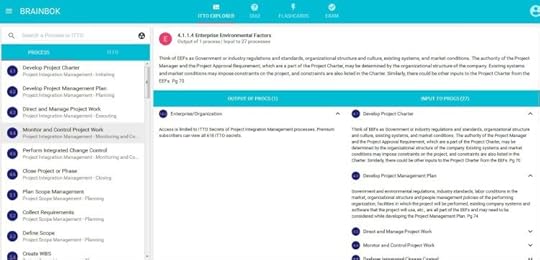 Inside the ITTO explorer in BrainBOKPros and consProsVery affordableProvides 35 contact hours of formal training for your PMP application (and therefore also meets the contact hours requirement for CAPM) — if you plan to apply for either certification you’ll know what a big stress reliever having your contact hours will be.Good range of exam questionsExcellent ITTO explorer that really makes it clear what goes into which process and how the processes interactFlashcards save you the effort of having to make your ownFantastic reports and analytics that help you understand where you should be spending more study time.Cons
Inside the ITTO explorer in BrainBOKPros and consProsVery affordableProvides 35 contact hours of formal training for your PMP application (and therefore also meets the contact hours requirement for CAPM) — if you plan to apply for either certification you’ll know what a big stress reliever having your contact hours will be.Good range of exam questionsExcellent ITTO explorer that really makes it clear what goes into which process and how the processes interactFlashcards save you the effort of having to make your ownFantastic reports and analytics that help you understand where you should be spending more study time.ConsThere are a few things that I would like to see in BrainBOK:
More explanation of why you would choose to use each process and what they are forIt’s purely self-study material: you have to be very disciplined about using the resourcesWouldn’t it help you study more if you made your own flashcards? (Although I agree having them on mobile is a huge benefit for my commute)There are no video courses or tutor-led material, which you typically find with other online PMP prep coursesThe ITTO Explorer is less relevant to the 2021 Exam Content Outline, although it is still good material to be familiar with for the actual ‘doing’ of being a project manager.No evidence that BrainBOK materials reflect the 7th edition.BrainBOK is a great way of making the PMBOK® Guide accessible. It’s a good tool for PMP mock exams and practice questions, and will help you test your knowledge of project management.
However, to be a great project manager in real life, I think you’d still benefit from other training material too.
For example, BrainBOK is a fantastic tool for digging into the detail, but there’s very little narrative explaining what project management processes are for or why you would choose to use them.
Essential read A Guide to the Project Management Body of Knowledge (PMBOK (R) Guide) (PMBOK® Guide) £41.00A Guide to the Project Management Body of Knowledge (also known as the PMBOK® Guide -- 6th Edition) is core reading as prep for PMI exams.
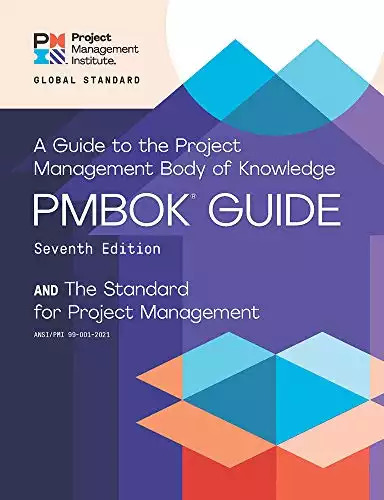 See on Amazon We earn a commission if you click this link and make a purchase, at no additional cost to you #ad 01/28/2023 07:25 am GMT
See on Amazon We earn a commission if you click this link and make a purchase, at no additional cost to you #ad 01/28/2023 07:25 am GMT If you are new to project management, you would benefit from knowing this because it will help you do your job and give you more confidence in the workplace. It will also help you answer some of the exam questions, because you’ll be able to apply your everyday knowledge to the situations in the questions.
You can get this sort of background information from a companion PMP study guide (here are my favourite PMP prep books), or you might feel you don’t need it, if you already have a few years of experience so you understand why you are doing certain things.
And if you are going for the CAPM®, the exam is 100% based on the contents of the PMBOK® Guide so it becomes less important to have that rounded view of what it means to manage projects in real life.
Who is BrainBOK for?BrainBOK is a great tool for you if you:
Are studying towards PMP or CAPMAre self-motivated enough to create a study plan and use the materialsAre prepared to read PMBOK 7 as well to supplement the material provided, for rounded exam prep.Are on a limited budget, or don’t want to spend too much money to get an easy way to meet your contact hours requirement.If you like the idea of having a trainer guide you through the material, I recommend The PM PrepCast. If you need the interaction of a classroom and a live setting, check out what courses or prep classes are offered by your local PMI Chapter.
In summary…The strength of BrainBOK is in the performance analytics. Whether it is quiz questions, flashcards or exams, it’s easy to see your strengths and weaknesses with the data you get out of the tool.
This will help you spend more time on the areas that you struggle with. The mock PMP exams and exam practice questions will help build your confidence in a way that reading a study guide will not.
Test out BrainBOK for free here.
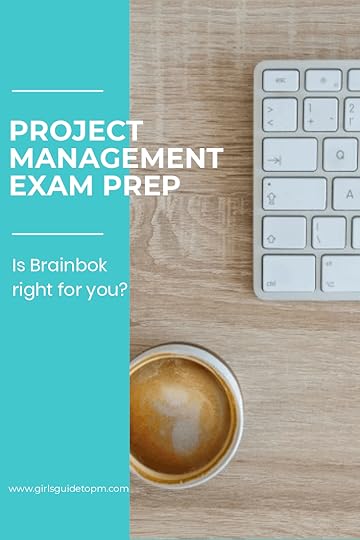
Save
Recommended CAPM and PMP Prep BooksThe PMP Exam: How to Pass on Your First Try by Andy CrowePMP Exam Prep by Rita MulcahyCAPM Exam Prep by Rita MulcahyA Guide to the Project Management Body of Knowledge (PMBOK®) Guide from PMIThe 50 PMP Exam Questions Everyone Gets Wrong by Cornelius Fichtner Cost-effective training BrainBOK PMP Training $149.99Get BrainBOK's comprehensive suite of PMP® exam prep tools, including a full training program, ITTO pack, flashcards, practice exams and a formula guide.
 Buy Now We are pleased to be an affiliate of BrainBOK #ad
Buy Now We are pleased to be an affiliate of BrainBOK #ad This article first appeared at Rebel's Guide to Project Management
The Best PMP Exam Simulators for 2023
Here’s the TL;DR: the best PMP exam simulator is the PM Exam Simulator from the team at the Project Management PrepCast.
I have used it and can vouch for it, and that’s what I’d buy if I were you.
If you want to know why that’s my top choice, and check out some other options, read on for my independent reviews!
Table of ContentsWhat are Power Skills PDUs?What does 'Power Skills' mean?What project management tasks count as power skillsExamples of qualifying activities for Power Skills PDUsThe easiest way to earn Power Skills PDUsNext stepsPin for later reading:It won’t come as a surprise to you that using an exam simulator for your Project Management Professional® exam is a key criteria for successful prep and a massive boost to your chances of success.
So many students I hear from say that taking mock questions and PMP practice exams is the single biggest thing that helped them feel prepared for their real test.
Let’s look at some simulators that help you do exactly that.
I’ve looked at these popular realistic PMP exam simulators:
PM Exam Simulator (from PM PrepCast)PM Fast Track (from Rita Mulcahy)Master of Project Academy SimulatorBrainBOK exam simulatorBrain Sensei PMP Exam SimulatorSummary of featuresThe table below shows a summary of the exam simulator features from the products I looked at.
Product# of questions# of examsFree option available?Explanations provided?PricePM Exam Simulator2,280+5YesYes$149 for 90 daysPM Fast Track2,000+Not specifiedYesYes$299 for 12 monthsMaster of Project Academy1,600+9YesYes$177 lifetime or $57 per monthBrainBOK1,000+6YesYes$89.99 for 90 daysBrain Sensei1,500+Not specifiedNoYes$119.99 for 6 monthsAll simulators had these common features:
Ability to work through questions within a time limitInternet-enabled for online useFree questionsDifficult questions (although of varying quality)Answer explanations (although of varying quality).Now let’s dive into the detail and review each of the simulators.
PM Exam SimulatorNumber of questions: 2,280+Number of exams: 5 plus separate question bank for timed quizzesFree sample questions available? YesExplanations provided? Yes, for all answers (even the incorrect ones). References to a variety of sources provided.The best part about this exam simulator is the confidence you get from using it. I think that comes from the detailed explanations and references and the realistic exam environment. It’s a learning tool, not just a test tool.
Each answer – even the wrong ones – is explained so you know exactly what you got wrong, and more importantly, why.
That’s the secret to great PMP exam prep. It’s not enough to simply know you got the wrong answer, you have to understand why and see where you can go for more information to deepen your knowledge on the topic.

It also includes hints, so if you think you’re almost there but just need a little prod to get to the right answer, then tap the hint button for a clue.
It also has amazing analytics. The anonymized responses from all users combine to give you a benchmark of where you are. You can see your personal journey, track your progress, drill down into different domains and topics so you make the most of your study time.
Because why waste time studying something you already have a pretty good grip on?
Subscriptions are available on a 3-month basis. The clock only starts when you choose, so don’t worry about buying it in advance and waiting until you are ready to use it.
The PM Exam Simulator has the largest number of practice questions of the products I looked at and a good range including EVM questions.

You can extend your subscription if you need to, but the focus is on getting you exam ready in the shortest possible time and maximizing your chances of first-time success. So fingers crossed you won’t need to extend your access to the test questions.
There are dozens of Google reviews and case studies from satisfied students. For me, that means a lot.
They have also recently added Simulador del Examen PMP PrepCast so that you can prepare if you are planning on taking the exam in Spanish. Use code esp49 to receive $30 off at checkout!
so that you can prepare if you are planning on taking the exam in Spanish. Use code esp49 to receive $30 off at checkout!
Practicing before you take your PMP Exam is the best way to pass the test.
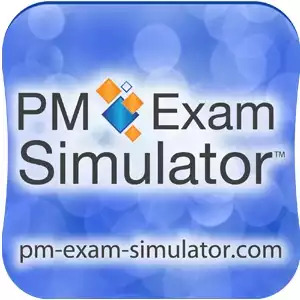 Learn more We earn a commission if you click this link and make a purchase, at no additional cost to you #ad PM Fast TrackNumber of questions: 2,000+Number of exams: not specifiedFree sample questions available? YesExplanations provided? Yes, for the correct answer. References provided.
Learn more We earn a commission if you click this link and make a purchase, at no additional cost to you #ad PM Fast TrackNumber of questions: 2,000+Number of exams: not specifiedFree sample questions available? YesExplanations provided? Yes, for the correct answer. References provided.Brought to you by the RMC team behind Rita Mulcahy’s brand, this online subscription exam simulator is another solid option and would be my second choice, although it is a hefty price tag in comparison to other available simulators. That’s because you get a year of access.
I love that it is available in Spanish and Portuguese too.
It has a clean user interface and works perfectly on a touch screen. You’ll want to spend as much time as possible using realistic PMP exam sample questions, so it’s important (to me, at least) that the design is good and the tool is easy to use, which this one is.
The team at RMC are constantly working to update the questions and the student reviews are good. If you need a product that you can use continuously for a longer period, this is the one to get as it’s representative of the real exam.

It’s also available as part of a PMP test package, so if you are looking to get an exam prep book and flashcards too, it works out cheaper to buy the bundle. There are also bulk discounts so if a group of project managers wanted to study together, at your work, for example, there are corporate deals.
I hear that many PMP candidates love the products from RMC and I can see why.
Master of Project Academy SimulatorNumber of questions: 1,600Number of exams: 9Free sample questions available? YesExplanations provided? Only if you get the answer wrong, and only for the correct answers. No references provided.The thing that bothers me about the Master of Project Academy product is that they advertise it as something that provides “28 PDU (contact hours) to help your PM education eligibility”.
PDUs aren’t relevant here. You don’t get PDUs until after you are certified. Before you earn your PMP, you need contact hours. Other simulators don’t advertise that their products help earn contact hours… because they don’t.
PMI states in the PMP Handbook that contact hours are hours of “classroom instruction” that “addressed learning objectives in project management”. In other words, formal learning that is structured around different PM topics and has communicated learning outcomes.
Not just doing practice questions.
The product has a good selection of customer reviews, but the website has many examples of poor English grammar. I contacted the website owner with some examples, and they have since corrected the things I pointed out.
However, the sample questions provided in the free trial are well-written, updated to the latest exam content outline, and from what I can see, without grammar mistakes.
Explanations are only provided for the correct answer if you got the answer wrong. You might guess and get the answer right, and there’s nothing to tell you why.
There are also no references to the PMBOK® Guide or any other reference materials to point you to where you can learn more about a topic if you did get it wrong, unlike other simulators.
The questions provided in the demo do not reflect the latest style of PMP exam questions, in the new styles like hot spot, multiple response, limited fill in the blank etc. The demo only has ‘classic’ multiple choice questions.

I asked the site owner whether the full simulator provides all the new styles of questions and their response was: “The demo is just to provide a sense to our prospective students. Our comprehensive simulator is even better and including all types of questions as you can clearly see from the happy students’ reviews on TrustPilot.”
At the time of writing, I read a bunch of recent TrustPilot reviews and agree that students do rate this simulator highly. However, I did not see one review mentioning styles of questions.
It’s not expensive, and if you want a bank of questions to work through then this will do the job, but in my view it will only assess the knowledge you already have. It won’t help you get any better at your PMP studies.
BrainBOK Exam SimulatorNumber of questions: 1,000+Number of exams: 6Free sample questions available? YesExplanations provided? Yes, and referencesBrainBOK is more than simply a simulator. It also includes Flashcards, and online study guide, a formula guide, a test purely focused on PMP exam formulas and because it includes the PMP prep materials, you’ll get the 35 hours certificate.
It’s a complete bundle. The unlimited access option to all the tools is a cost-effective way of meeting your study needs for passing on your first attempt, if you think you’ll only need 90 days access to the tools. Having said that, it’s not very much more expensive to extend your access for 180 days.
If you only want the exams, you can buy a 5 exam bundle at a reduced rate.
I like the interface, the reviews are good (although there aren’t that many recent reviews).

However, the product is advertised as compliant with PMBOK® Guide – Sixth Edition. We’re now on the 7th edition (although the 6th is still relevant-ish if you don’t have the Process Groups Practice Guide) so it doesn’t look like this product is updated.
There are no recent blog posts as the blog hasn’t been updated for some time but the product itself looks like it is good quality and I enjoyed using it.
Brain Sensei PMP Exam SimulatorNumber of questions: 1,500+Number of exams: Not specifiedFree sample questions available? NoExplanations provided? YesBrain Sensei has been around for a long time as an exam prep course provider and now they also offer an exam simulator. It offers unlimited practice exams from its question bank of over 1,500 questions. It is completely updated to the current PMP exam.
Simulator buying tipsHere are a few tips for buying a PMP exam simulator:
Check around for discounts. Many vendors offer discounts if you sign up to their mailing list or use a coupon code which they share on social media.Remember that you’ll probably need a PMP exam prep course as well: sample questions are good, but an online course will give you a faster headstart and shorten your exam prep time.Make sure your simulator of choice is fully updated. PMI changes the specs regularly, so get one that reflects the latest question formats and exam content outline, and uses up-to-date reference materials. Project performance domains is where it’s at. ITTO questions are handy if you want the confidence boost but no longer feature on the exam.The best way to check out a PMP simulator is to use the free trials. Get a feel for what each product is like before clicking to buy.PMI does not publish the passing score. Simulators may indicate if you have ‘passed’ or not, but this will be due to the company setting an internal benchmark for a passing score. It is not representative of any pass mark that PMI applies, so be wary of that.Look at what other study materials are offered by the company. Many vendors bundle together their products and that makes them cheaper.Review the refund and guarantee policies before you buy. It’s often not possible for companies to genuinely guarantee you’ll pass – how do they know you simply aren’t lazy or didn’t study for the test? If you are in any doubt, don’t purchase, because you might not be able to get your money back.ConclusionIf I were you, I’d be buying the PM Exam Simulator from the PM PrepCast. It’s a good PMP exam simulator and a robust learning tool, updated to the latest PMI specs including the 7th Edition of the PMBOK® Guide and with enough questions to keep you busy and focus your studies.
It’s a good price, with an excellent support team and responsive help desk. The data inside will definitely help you prepare effectively and cut your study time.
We recommend The PM PrepCast PMP Exam Simulator $149.00Practicing before you take your PMP Exam is the best way to pass the test.
 Learn more We earn a commission if you click this link and make a purchase, at no additional cost to you #ad
Learn more We earn a commission if you click this link and make a purchase, at no additional cost to you #ad This article first appeared at Rebel's Guide to Project Management
January 23, 2023
Project Risk Audits: What you need to know
Are you looking for a way to better manage the risks associated with your projects? Risk audits are an effective tool that can help project managers and program managers identify potential issues before they become problems.
And it’s not just me saying that. Frequent use of risk management best practice is one of the top drivers of project success, according to PMI.
By taking the time to audit risk, you can reduce uncertainty in your projects while improving visibility into what could go wrong along the way. In this article, you’ll learn when to use a risk audit, who should do it and why, how it is different from a risk review, and lots more.
What is a risk audit in project management?Risk audits mean different things in different industries, so let’s only focus on the project management sense of the term.
A risk audit is a process used to determine whether the actions to manage the risk are actually happening and if they are happening effectively.
A risk audit can look at:
Project-specific risk policies and guidelinesThe risk management planThe risk management and mitigation strategies chosen for each identified riskWhether the right risk owners were chosen and how effective they wereEffectiveness of risk response plans and whether the right actions were done.In other words, the audit is a way to check that project risk management is happening (or has happened) in the right way.
Who carries out the risk audit?The project manager, another project manager, a PMO person, or a risk audit person could carry out the audit.
Audits are part of internal controls on a project and fall under the governance arena, so if you have specific PMO team members who look at governance, they are the ones to ask.
The results can be fed back to the project manager, program manager, or senior management, as it’s likely the output is going to be useful to more than just this project team.
By the way, while you probably have an Audit Committee in the organization, they probably won’t be hugely interested in your risk analysis. Unless there’s anything that has an implication for enterprise-wide risk management or the operational risk framework, the auditors are unlikely to be bashing down the door to see your documentation.
Benefits of a risk audit: Is it worth scheduling one?Audit? Who has time for that? It’s just another retrospective box-ticking exercise, right?
Wrong! It really is worth spending time reviewing the effectiveness of risk management practices in use. If you already have a process in place for peer reviews or PMO project audits, then reviewing risk is easy to add in to that.
The benefits are:
They provide a comprehensive assessment of the risks associated with a projectThey help identify potential areas for improvement on this project (if it hasn’t finished) and future projectsThey promote good project management practice – no more risk logs filed away and never looked at again.By conducting an objective risk audit, organizations can better manage their projects, increase efficiency and cost savings, and enhance decision-making processes.
Risk audits provide valuable information that can be used to inform decisions related to resource allocation and budgeting for future projects. Should we spend more time on risk management? Did we have the right risk owners? Did people know what to do when they were allocated actions to mitigate risk, and if not, why?
With this data, project leaders have greater visibility into where investments of effort (and money) should be made in order to achieve the desired results.
Risk management audits can provide invaluable insight into the project process and help organizations make informed decisions that maximize efficiency, deliver cost savings through better resource utilization, and improve the chances of overall project success. That’s good, right? We all want those benefits on our projects.
How is a risk audit different from a risk review?OK, the big question: risk audit vs risk review. Which one do I do?
You do both.
The risk review is the process of identifying, recording, talking about, updating the log, and working on the risk. It’s the daily stuff; the weekly conversations, and project reporting.
The audit, as we saw above, is a more thoughtful, lessons learned-style conversation on whether you were doing the right things, identifying potential risks in a timely way, choosing the right actions, carrying them out effectively with the right people, and therefore doing risk management in the best possible way.
The table below summarizes the differences.
Risk AuditRisk ReviewBroad scope covering all aspects of risk managementScope is focused on risk management executionOne-off exerciseRegular project management activityBest carried out by someone external to the project teamBest carried out by the project teamHappens retrospectively; reviews past performanceHappens in the moment as new risks are identifiedProvides assurance on the processProvides assurance that delivery risks are being handledLooks at the process overallLooks at individual risksWhen do you do a risk audit?You can do a risk audit whenever, but it’s best to think about how you’ll get the most out of the output. I would do one when I’m at least halfway through the project, so there is enough data to review, and I can do something useful with the output.
You don’t have to do what I would do, though. There are 3 moments in a project where you can carry out any kind of project audit, including one that focuses on the risk management process.
1. Pre-Project AuditThis type of audit is conducted prior to the start of a project. Use it to review other projects and pick up lessons from their experience to build into your planning.
This is a kind of pre-mortem: think about what could go wrong with the project and build in some resilience, so it doesn’t happen. The exercise helps with risk mitigation and identification because you can pick up a lot of what to do from what other projects did (or did badly!).
2. Interim Project AuditThis is the most common, in my experience. An interim project audit is conducted during the course of a project in order to assess progress against objectives and identify any areas that need improvement or adjustment. You might do one, or you might have them planned in at regular intervals on a long project.
Use the experience to learn about how you can tweak delivery and ways of working to get better results from the rest of the project.
If your project is very short, you might not have time to do this, and you’d move straight on to the next one…
3. Post-Project AuditA post-project audit is a more formal experience than a lessons-learned session. Typically, lessons learned also focus on the ‘what’ of the project, whereas audits focus on the ‘how’ – did we do things in the right way? Did we follow the processes? How effective were we at doing project management?
These lessons can be filed away for use in future projects.
The frequency of risk audits will be something you can put in your plan. Then you’ll know when they are scheduled for and can prepare.
Key takeawaysRisk audits are a valuable tool for project and program managers to ensure their projects are running smoothly. Risk audits provide an in-depth look at how project risk management is being done on a project, and that provides insights into what could be done better.
Audits are different from regular risk reviews as they look at the effectiveness of the process.
Your next steps:
Talk to the PMO about what provision they make. Could someone audit your risks for you?Schedule time for a risk review. Incorporate it into a retrospective or a broader project audit to minimize the impact on your workload.Talk to the project stakeholders about the purpose of managing risk and do a brief sanity check to ensure you are managing risk effectively – you can do this without the overhead of a full risk audit.Finally, if you have the time, pick one of your past projects to go back to. Pull up the risk log and look at how effectively you managed the risk during the lifecycle. What would you do differently? Where are the glaring holes in what you did? And with the benefit of hindsight and distance, can you work out why those things happened?
You might be surprised at what you learn!
Pin for later reading
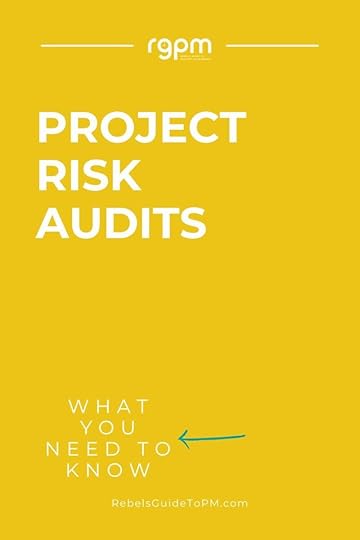
This article first appeared at Rebel's Guide to Project Management
January 18, 2023
Crashing Vs Fast-Tracking: What’s the Difference?
Have you ever been asked to ‘just get the project done’? When you absolutely have to hit the deadline but your schedule says no, you really only have a couple of choices.
Research from nPlan of 500,000 project schedules points to nine out of every 10 projects are delivered late. Admittedly, that data set is mainly large-scale civil construction, but with around two-thirds of projects coming in two months or more late, you have to acknowledge there is a delivery problem.
It’s likely that the issue is reflected in non-major construction projects too. KPMG’s research shows that 42% of projects are likely to be delivered on time… that’s not much to write home about.
So it’s clear that as project professionals, we should be doing our bit to make sure projects don’t get delayed more than is absolutely necessary.
When it comes to compressing a project timeline, there are two main strategies available to you in a predictive (waterfall) environment: crashing and fast-tracking. Both of these techniques have their advantages and disadvantages when it comes to changing a project’s duration, but which one is the best for your specific situation?
In this article, we’ll dive deep into both approaches by looking at how they compare against each other as well as their associated costs. We’ll also discuss different strategies you can use if you decide to crash or fast-track your project so that you get the most out of them.
CrashingFirst up: crashing.
What does it mean to crash your schedule?Crashing is a project management technique used to reduce the total duration of a project by adding additional resources or making other changes. It is often used when there are time constraints and the project needs to be completed quickly.
When I’ve used it, what we’ve done is add more people to the project team so tasks can be completed more quickly. That shaves off time.
Of course, it does depend on who you get allocated as extra pairs of hands. Someone with no experience may slow you down as you have to train them rather than speed you up. An alternative is to secure your resources for more time, perhaps asking them to work full-time hours if they are part-time or paying for overtime.
And you can’t crash every task. You know the saying: it takes one woman 9 months to make a baby, but you can’t make a baby with 9 women in one month. Some tasks just won’t take less time, regardless of how many people you assign to them.
Let’s look next at the advantages and disadvantages of crashing your schedule.
Benefits of schedule crashingThe main benefit of crashing is that it can significantly reduce the amount of time needed to complete a project, allowing the team to get the work done more quickly. That should make it more likely that you’ll hit the delivery date that your exec sponsor promised the client. (Yep, we’ve all been there.)
Another odd advantage of schedule crashing is that it can help improve quality control since more resources are allocated to the work. That should (in theory, anyway) help ensure accuracy. Or at least make it less likely you’ll make stupid mistakes through rushing as you don’t have enough people.
Limitations of schedule crashingTo crash your project schedule, you need more people (or resources of other kinds – if you are in a factory, turning on another production line would have the same effect).
That’s a major limitation. As I mentioned above, you might not be able to get the ‘right’ resources: people who are aware of the project, need little support or onboarding from your already over-stretched team, are available, and have the right skills.
You might be able to speed up some simple tasks by hiring a temp resource or backfilling the post for a while, but most skilled project work will require someone who understands the organization and what you are trying to achieve.
And you have to pay for those people. If your project budget is as stretched as your time, your sponsor is going to have to make a difficult call: is there money available to pay for the extra help? How much will the incremental cost be, and is it worth carrying that amount?
If you are asking them to work more, are you at risk of burnout in the team?
Investing in additional resources can pay off. For example, if your contract with the client comes with penalties for every day you are late, the cost of extra staff to hit the contracted delivery date may well be less than the penalties between now and the forecasted delivery date. Getting the project done on time might incur additional costs now, but that is balanced by the savings against non-delivery.
There are also risks associated with rushing through tasks, such as increased chances for errors or mistakes due to inadequate planning and execution.
Crashing is a useful technique for project managers to consider when seeking to reduce project duration, but it also comes with certain limitations that should be taken into account.
Fast-TrackingFast-tracking is another project management technique used to reduce the duration of a project without changing its scope. It involves performing tasks in parallel that would normally be done sequentially, such as starting construction before the design is complete or beginning testing before coding has finished.
It’s a bit scary to work in this way, but if needs must, it’s an option to consider.
What does it mean to fast-track your schedule?Fast-tracking is an approach to project scheduling where activities are performed concurrently instead of consecutively. Work on activities in parallel to get more done in a shorter time period.
It allows for overlapping tasks so that the overall timeline of the project can be shortened without reducing its scope or quality standards – as long as you focus on critical path tasks.
For example, if two activities need to happen in sequence—such as designing a product before manufacturing it—fast-tracking could involve starting both activities at once by having designers work on one part while engineers start working on another part simultaneously.
An easier situation is where there are no dependencies between tasks or discretionary dependencies between tasks, and you just bring forward the start date of a later task to get the work done earlier. This can add more slack to the schedule, which can be useful later.
When I’ve used it, we’ve started testing some software components while others are still being built. It’s not without risk, as you don’t know whether a later build will have an impact on the modules you’ve just signed off.
Let’s look next at the advantages and disadvantages of fast-tracking.
Benefits of fast-trackingThe primary benefit of fast-tracking is the same as schedule crashing: you can shorten the timeline for completing a project without compromising its quality or scope.
Do everything! Just in a slightly uncomfortable-feeling order while increasing the risk profile of the project!
Putting my personal feelings about fast-tracking aside, let’s get back to the benefits.
Fast-tracking the project schedule means projects can get done faster (the clue is in the name) and potentially save money by avoiding costly delays due to dependencies between tasks that would otherwise have been completed sequentially.
It might also be free if you have the resources already lined up: you’re just changing the time you are needing them.
Fast-tracking also allows teams to identify potential problems early on since they’re working on multiple parts of the same task at once, which helps them address issues quickly and efficiently when they arise during development or production phases later down the line.
Limitations of fast-trackingOne major limitation is increased risk; due to attempting to do more than one thing at once, there is always a chance something could go wrong, which may lead to costly delays or even failure if not addressed in time.
Your project assumptions are put to the test: can you really run activities in parallel with no consequences?
I think fast-tracking also requires more project management oversight and attention, as you’ve got several tasks moving along at pace and that needs more coordination.
Doing tasks in parallel might change your resource costs – and, as I’ve just mentioned, increase your project management overheads too.
Fast-tracking is a powerful tool for project managers to help them meet tight deadlines and optimize human resources. But I’d recommend using it with caution.
Comparing Crashing and Fast-TrackingOK, but what’s the difference between crashing and fast-tracking again?
Fast-tracking means reworking the project schedule to complete tasks in parallel instead of in sequence. Crashing is where you add more resources to individual tasks so they can be finished faster.
In reality, you can use them both on the same project, and they are both used to compress a project’s schedule. Both require you to have decent task estimates of how long the work will take so you can calculate the time saving expected. Both of these techniques involve reducing the duration of activities, but they differ in how they do so.
So which one should you choose?
Both crashing and fast-tracking techniques are used to reduce the time it takes for a project to be completed by decreasing the amount of time needed for certain tasks or activities. They only make a difference to project timelines if you crash or fast-track tasks that are on the critical path.
They both also require additional resources, such as money, materials, people, etc, in order to complete them faster than originally planned.
Choose based on what your problem is and how you can fix it. Can you get more resources or more time from existing resources? Are the tasks crashable? Is the task required urgently? Go for crashing.
Can you juggle the tasks around? Can you run tasks in parallel without compromising quality? Are there some activities where you are prepared to accept the risk of running tasks in parallel in case that means rework in the future? Go for fast-tracking.
In reality, you’re likely to find room for them both in your plans to cut time out of your schedule. Some tasks are better suited to one or the other, so don’t feel limited to just one technique.
How to make schedule compression work on your projectsAs project managers, we often have to make difficult decisions to juggle time, cost, quality, customer satisfaction, value, benefits, and more. Schedule compression techniques are no different. There are tradeoffs to weigh up.
And you need to know the difference between the two techniques for your Project Management Professional (PMP)® exam.
Here are some tips for making whatever schedule compression approach you choose work for you.
Consider the costBoth crashing and fast-tracking incur costs. Do the cost-benefit analysis.
Go for the lowest crash cost per unit of time – the activities that cost the least to crash, so you get the most value out of them.
Look for options that are the lowest cost and ask the question about where the extra money will come from.
Plan ahead for risks and issuesYou know this isn’t the way you’d be leading the project in an ideal world. So bear in mind that compressing the schedule with either crashing or fast-tracking is going to potentially bring more issues to your door.
Identify any risks that are specifically related to changing the schedule. For example:
Resources may not be available, or may not have the right skills.Tasks may need rework to bring them in line with delivery expectations.We may have to carry an increase in cost.The team might suffer with burnout or lower morale as a result of the extra work or expectations.Put contingency plans in place to help ensure that any unforeseen issues can be quickly addressed without causing too much disruption to the timeline of the project.
Identify the right resourcesBefore you go ahead and make the decision to crash or fast-track, consider who is available to help you out. What other projects are lower priority and could go on pause while you poach their resources? Who could increase their hours?
And most importantly, remember Brooks’ law: will those people actually give you the desired effect of saving time, or will they end up adding time as you have to bring them up to speed?
Fred Brooks wrote about how adding manpower to a software project makes it take even longer in his book The Mythical Man-Month (1975). While we have better development approaches and project management software to help now, I do still think there is so much truth in this concept.
When we added an intern to our team, it did not speed up my workload, at least. I had to spend a long time on training and support, which pulled me away from my own tasks. Longer term, that was a good thing, but for a short-term fix on a project, you’ll have to consider whether it really is the right thing to do.
Manage stakeholder expectationsTell project stakeholders what you are doing and why the original schedule no longer works. Spell out the risks. Explain the benefits and point out this is the best chance of completing the project deliverables.
Get them onboard and helping to secure the additional resources and support required.
Set expectations for the teamMake sure people on the team know what they are responsible for and how that fits into the bigger picture. Keep your schedule up-to-date and accurate.
Talk regularly with everyone. You’ll have to do more project communication because the overall risk profile of the project is higher, and there’s more at stake if things go wrong.
You don’t have time for tasks to fall through the cracks or for people to do work based on an outdated version of a specification.
In summaryBoth the crashing technique and the fast-tracking technique will help you keep a project on track when time is shorter than you planned. Crashing is more focused on reducing activity durations, while fast-tracking focuses on overlapping activities.
Both give you time savings but have benefits and drawbacks, so it’s important for project managers to consider resource and cost implications before deciding which technique to use. Or whether to use both: the reality of project management is that they are often used together.
And remember, go through the right project governance whenever you want to change the ways of working for the team.
When implementing either crashing or fast-tracking, it’s essential for project managers to plan ahead, engage the team and manage expectations in order to ensure success with these time management strategies.
How will you put these into play on your projects to bring down your overall duration?
Pin for later reading
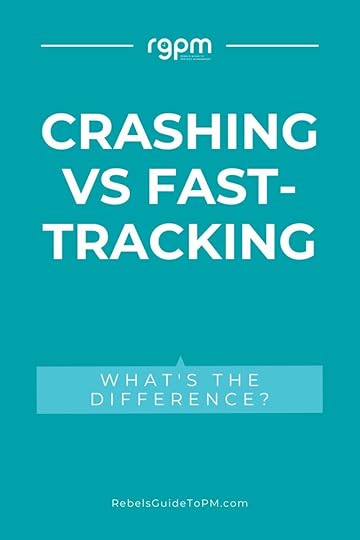
This article first appeared at Rebel's Guide to Project Management
January 4, 2023
Weighing the Pros and Cons of Autocratic Decision Making
When it comes to project management, autocratic decision making can be a valuable tool for achieving success. But it is not without its drawbacks; the pros and cons of this style must be carefully weighed before implementing any decisions.
In this blog post, we’ll look at what autocratic decision making is, when you should use it in your projects, how it fits with leadership styles, strategies for successful implementation within the workplace, and more! Join us as we explore the complexities of autocratic decision making.
What is autocratic decision making?Autocratic decision making is a style of management where decisions are made unilaterally by one person, without input from other stakeholders. This type of decision-making is often seen in authoritarian environments and can be beneficial when time is of the essence or when a quick response to an issue needs to be taken.
The decision-making process is barely a process. It involves a single individual having complete control over the decision. The individual has full authority to make decisions without consulting with anyone else or taking into account any opinions from others.
It is typically used in situations where there isn’t enough time for consensus building, such as during emergencies or times of crisis.
That makes it not a brilliant choice for most project-related decisions, to be honest. Yes, there are some crisis moments on projects where you need the sponsor to take control and just make the call.
But mostly, projects are better where you work collaboratively to uncover issues and review all the potential solutions with input from all stakeholders.
Examples of autocratic decision makingAn example of this decision-making style would be if an organization needed to quickly respond to a customer complaint and had no time for discussion among all parties involved; the manager could make an autocratic decision on how best to handle it without seeking input from other team members.
Another example would be if a project was running behind schedule and needed immediate attention; the project manager could decide which tasks need priority and instruct the team to work on those.
One benefit of autocratic decision making is that it allows for quick responses in urgent situations, which can help prevent further damage or losses due to delays in action. This is helpful in situations where time is money.
For example, we have had contracts in place with suppliers that include penalties for late delivery. Every day the supplier is late, they pay. That would certainly focus the team to do some quick decision making and get their aspect of the work back on track.
Drawbacks of autocratic decision makingAs you can imagine, this style of getting things done is not without its challenges.
Autocracy does not allow room for creativity or collaboration between different teams within an organization. That could undermine your change activities, engagement work, ability to deliver and lead to rubbish results.
When the person making the decision doesn’t have all the facts, the skill or the expertise to make a judgement call, that’s bad. And unfortunately, it happens. Complex decision-making and autocracy don’t feel to me like very good partners.
Have you ever felt like your opinion (which was a good one) was overlooked by the decision maker? Yes, I’ve been there too. I think this experience leads to resentment among team members who feel like their opinions were disregarded. In turn, that could lead to low morale within the team and decreased productivity over time as well as high turnover rates amongst employees who do not feel valued by their leaders.
Do you want to take that risk?
Personally, I think the drawbacks in a project setting outweigh the benefits (speed, single point of authority) but let’s look now at some times where it would be appropriate to go with this management style.
So, are there any benefits?
Benefits of using autocratic decision makingThe primary benefit of autocratic decision making is speed.
The decision-making power sits with one person so choices can be made quickly without consulting anyone else. That can help keep projects on track and ensure deadlines are met.
Additionally, since only one person makes all the decisions, it eliminates any potential disagreements between team members about how things should proceed which helps maintain focus and efficiency within a project team.
But, meh. If you’ve done proper planning, you should have enough time (except in a major issue situation) to engage stakeholders for the vast majority of decisions.
Read next: The Impact of Framing in Decision Making
When to use autocracyAutocratic decision making may be appropriate when quick action needs to be taken and there isn’t enough time for consultation with team members or stakeholders.
This could include emergency situations such as natural disasters or security threats, or urgent deadlines on projects that require immediate attention from the leader. In these cases, autocratic decision making allows the leader to take control of the situation and make decisions quickly without having to wait for input from others.
It’s helpful too where the decision maker has enough or more experience than others. That gives the rest of the team a bit of confidence that they know what they are doing and they’ll make the right call.
Equally, sometimes you just have to make a decision to keep the work moving. Having someone who can make an ‘executive order’ so your project doesn’t stagnate can be a good thing.
As decision-making methods go, it has its place.
How does autocratic decision-making fit with leadership?Leaders – which would be all of us, as leadership is a skill you can demonstrate at work without any formal leader-y role – make decisions all the time, often decisions that affect other people.
An autocrat leader makes all the decisions and expects their team to follow them without question. Sounds fun.
Autocrat leaders typically have strong personalities, are confident in their own abilities, and can be very persuasive when it comes to getting people to do what they want. Have you met any in your organization?
They often rely on their own experience and knowledge rather than considering other perspectives or input from those around them. They also tend to be highly organized and efficient, as well as results-oriented.
One advantage of having an autocrat leader is that decisions can be made quickly since there’s no need for discussion or debate among team members. This type of leadership also encourages efficiency since tasks are completed with minimal time wasted on debating different options or strategies.
This style of leadership can help create a sense of order within the organization by setting clear expectations for employees regarding how things should be done and who has authority over certain tasks or projects.
But doesn’t that sound like micromanaging to you?
The downside of an autocrat leader is that they may not always make the best decisions as they do not take into account other opinions or ideas from their team members. This could lead to missed opportunities or mistakes due to lack of information and insight from those involved in the project or task at hand.
And let’s stress how negative it can feel to work under an autocrat who tells you every little thing to do and there is no freedom of action.
Strategies for taking autocratic decisionsOK, let’s say you are in a project leadership role, perhaps as a sponsor, senior project manager or program manager – someone who has full authority over the project. How do you go about taking an autocratic decision?
Let’s say there is no need for consultation. The client has come to you with a problem and it needs to be fixed. You could do a long root cause analysis investigation, but you’ve seen this problem before and you’re 99% sure that you know what will fix it. It’s worth a try, right?
Let’s make the decision without upsetting too many people.
1. Communicate the decision clearlyTell people what you have decided and why.
2. Tell people what is expected of themMake sure everyone knows what is expected of them, especially around the tasks to do and deadlines.
3. Listen to feedbackYes, even though you’ve already made the decision and issued the directives, it is worth listening to feedback. Provide opportunities for team members to give input into these choices whenever possible.
4. Let them do the tasks their own wayYou’ve made the decision. You don’t need to mandate how they enact the decision.
Let people have some freedom of action over how they meet the goals or deliver the task.
By setting clear expectations, communicating decisions effectively, and providing opportunities for employee input and feedback, you can make sure that should you have to take a decision alone, you are doing it in the nicest way for the team and with the best outcome for everyone involved.
Use with caution!Though the autocratic style of leadership may seem appealing due to its ability to deliver results quickly, long-term use can be detrimental to a project team and an organization more broadly. People don’t show up to work to be ignored, not consulted and told exactly what to do for every little thing.
Sometimes this style is appropriate, but mostly it’s not the best way for project teams to work as it isn’t collaborative or engaging and it goes against pretty much everything I write about in my book, Engaging Stakeholders on Projects: How to harness people power.
I would strongly advise project professionals to use consensual decision-making and to wield your decision-making power really carefully. It’s up to you to make the right call, in every sense.
Key takeawaysAutocratic decision making can be beneficial in certain situations, such as emergencies or times of crisis, where quick responses are needed.It’s important to recognize its limitations and ensure that creativity and collaboration between teams is not sacrificed for the sake of speed.Without taking into account other perspectives or input from team members, decisions may not always be the best ones and morale could suffer if employees feel their opinions are not valued.Consider the pros and cons before opting for taking a decision by yourself. If you need to, make sure people understand why you have made that choice, what the decision is and what they need to do next.Quick FAQsWhat is an example of autocratic decision-making?This style of decision-making often results in the leader having complete control over the project and its outcome, with little to no consideration for other team members’ opinions or ideas.
Autocratic decision-making can be beneficial when quick decisions need to be made, but it can also lead to an unbalanced power dynamic within a team and ultimately hinder creativity and collaboration.
What are the 4 decision-making styles?1. Directive: This is the autocratic style and involves making decisions quickly and decisively, with the leader taking full responsibility for the outcome.
2. Analytical: This approach requires gathering data, analyzing it carefully, and then making a decision based on facts and logic.
3. Consultative: Here the leader seeks input from others before making a decision but still retains ultimate authority to make the final call.
4. Participative: Leaders involve their team in all aspects of decision-making by encouraging open dialogue and collaboration among members to reach consensus on solutions or outcomes.
How does an autocratic manager make decisions?An autocratic manager makes decisions unilaterally, without consulting or considering the input of others. They rely on their own judgement and experience to make decisions that they believe are in the best interest of the organization. Autocratic managers typically have a top-down approach, where employees must follow orders without question or discussion. This type of management style can be effective when quick decision making is needed, but it often leads to lower morale among team members who feel unheard and unappreciated.
What is directing autocratic leadership?Directing autocratic leadership is a style of management in which the leader has complete control over decision-making and delegates tasks to subordinates. This type of leadership focuses on top-down communication, with decisions being made by the leader without input from team members. The leader’s authority is absolute and their decisions are final. Directing autocratic leaders may use rewards or punishments to motivate employees, but ultimately rely on their own judgment when making decisions for the team.
Pin for later reading
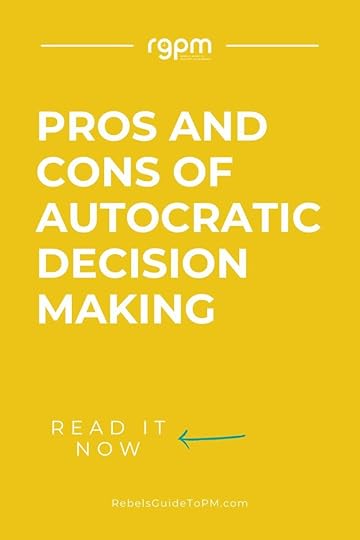
This article first appeared at Rebel's Guide to Project Management
December 28, 2022
Build, Excite, Equip: How to Simplify Change Adoption in Your Projects
Build, Excite, Equip: How to Simplify Change Adoption in Your Projects, by Nicola Graham, is a handbook for business change management aimed at project managers.
Given that project teams have to incorporate the business change elements to make sure projects land as expected – but often without the support of a dedicated change manager – this is a useful and much-needed book.
Build, Excite, Equip (BEE) is a simple 3-step methodology backed by neuroscience for making sure change management is woven into your projects.
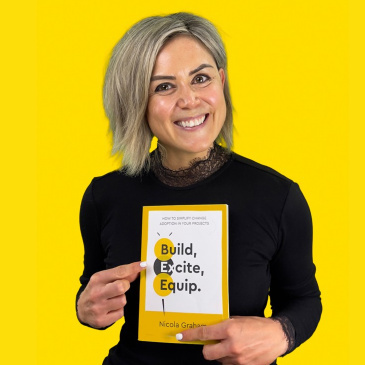 Nicola GrahamWhat is BEE?
Nicola GrahamWhat is BEE?So how does it work? It’s very straightforward. BEE is formed of 3 phases, each split into 3 areas, so you’ve only got 9 steps to review and implement. They are:
Build: Organization, People, Project
Excite: Create, Inform, Market
Equip: Develop, Educate, Invigorate.
The book talks about each section of the method, with QR codes that link out to case studies and online tools (smart!). There is a checklist for each phase.
As with all the best approaches, Nicola makes it clear that you can pick and choose the parts of the method you want.
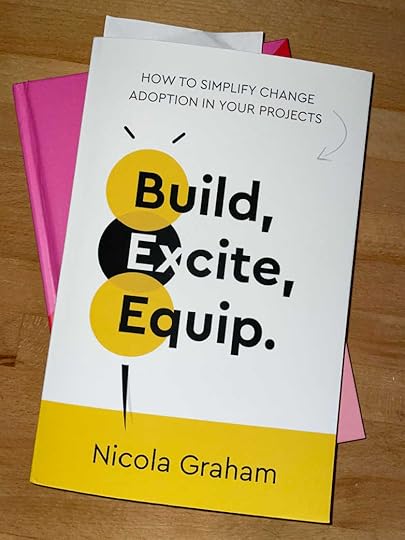 Practical tools for change management
Practical tools for change managementWhat I really liked about the book was the practical tips and tools. For example, Nicola talks about the need for monitoring and KPIs to track success and the book includes a sample scorecard. There is an example communications plan, engagement plan (including a change freeze, which has caught me out in the past).
The tips might read like they are simple, for example, make sure your comms grab attention and built anticipation – yes, that’s pretty obvious. But how many project communications have you read where you’re asleep by the end the email announcement?
We need reminding of this stuff because work life is busy and we end up taking shortcuts that make our change management work worse.
Developing a knowledge repositoryI love this stuff – my very first conference presentation was on the creation of a corporate intranet and it took a ‘knowledge’ angle. There is a whole chapter in the book about creating a knowledge repository for your project.
That repository is useful for training and support, but also for reuse in the future – because Nicola advocates that anything we can reuse should be reused on future projects.
The chapter is written in a way that means it should be tool agnostic, but I do wonder if it will date with time. Perhaps new ways of storing organizational knowledge will come along.
My summaryBEE gives you enhanced social currency within the organization. In other words, your projects will be more successful because they are more likely to slot into the fabric of the business without causing horrible disruption. There’s still going to be disruption, because that is what change delivery is all about, but it won’t be an awful experience for the people involved.
I love the inclusion of links to online tools and questionnaires so you can get going quickly.
It’s clear that Nicola has lived through many change initiatives and knows what works. For example, she writes about how to plan for what to do when people don’t show up to training. Because you know some of them won’t!
She also references the emotional response to closing out a big piece of work and how to manage that, which is something we think about for the people affected by the change, but not for the change makers themselves.
The book takes a hugely pragmatic, realistic approach based on what actually happens in organizations – not what theory says is going to happen. And that’s what makes it a useful book for any project manager to have on their shelf.
Best for:Project managers, project sponsors, team leaders who are expected to deliver change beyond just switching the thing on.Training managers looking to boost the efficacy of their training delivery in a project setting.People who want a step-by-step guide to how to actually ‘do’ change management without investing in certification or expensive training/accreditation.Avoid if:You have a dedicated change manager on your project (maybe buy a copy for them?)You’re already an expert in business change e.g. Prosci certified, as this is aimed at people who need practical, quick wins.This article first appeared at Rebel's Guide to Project Management



